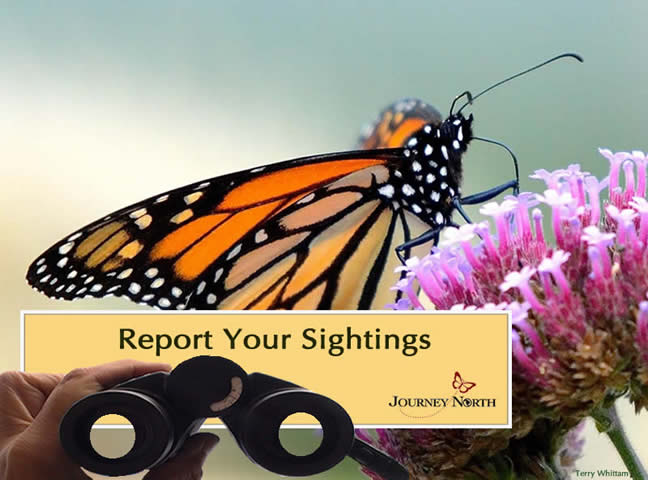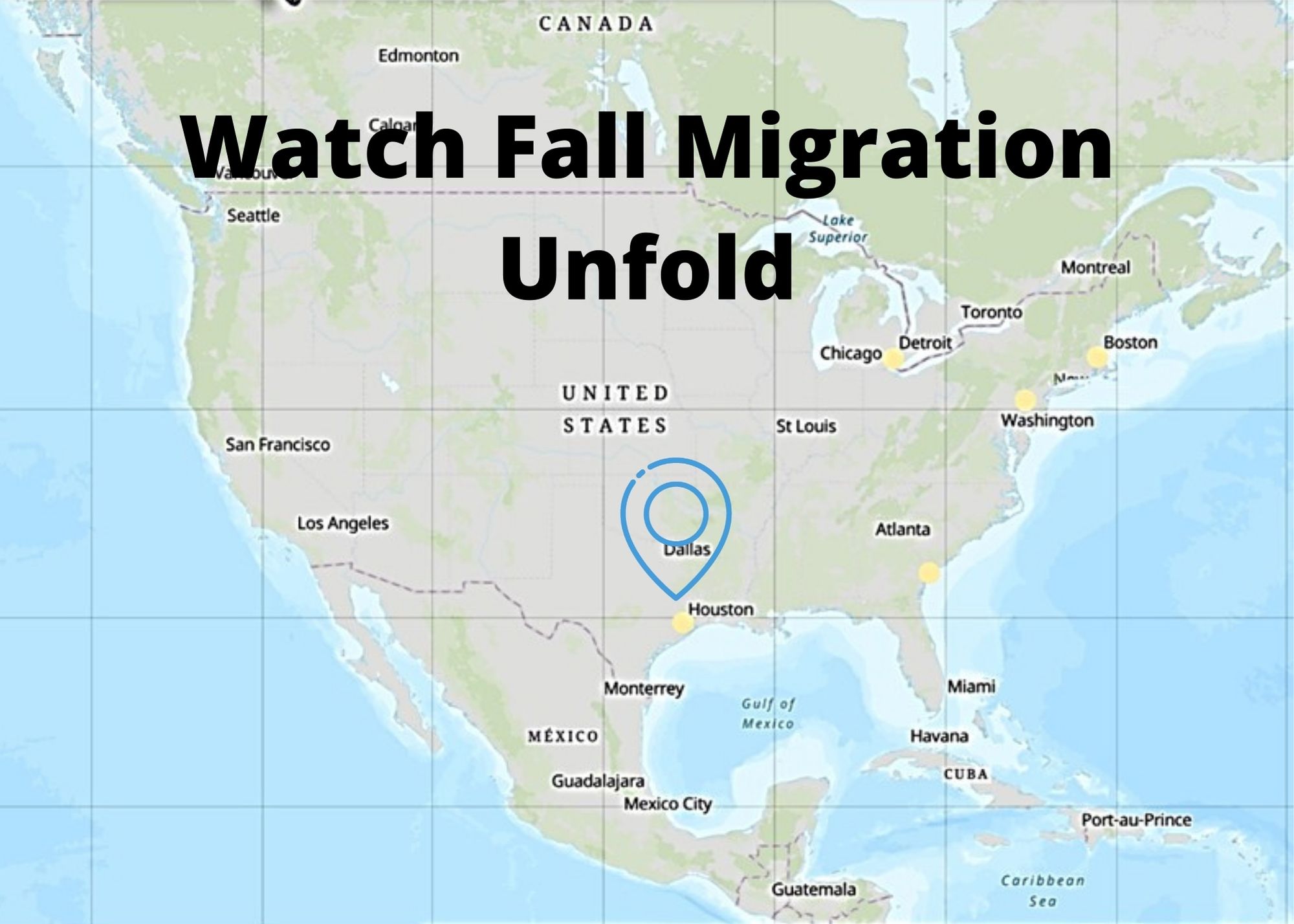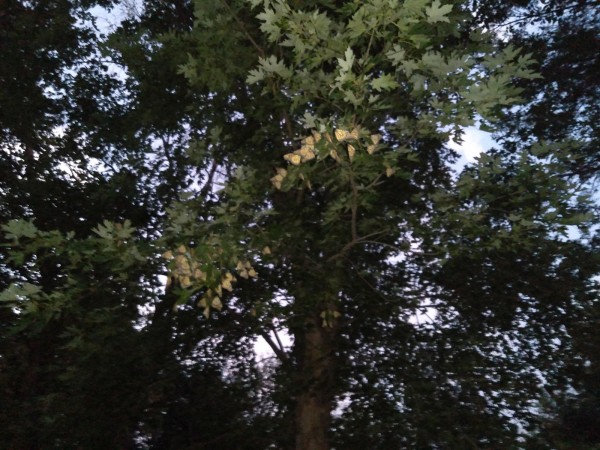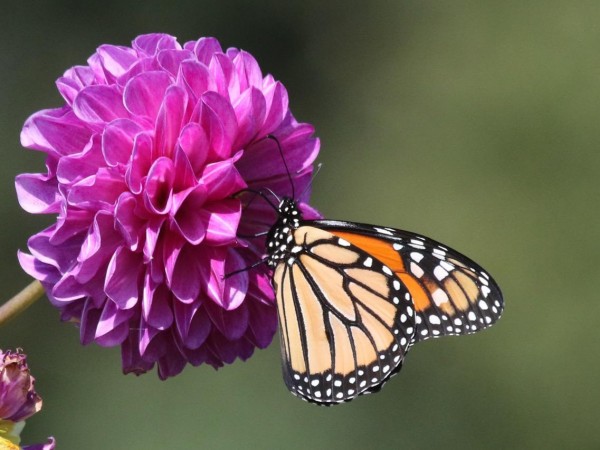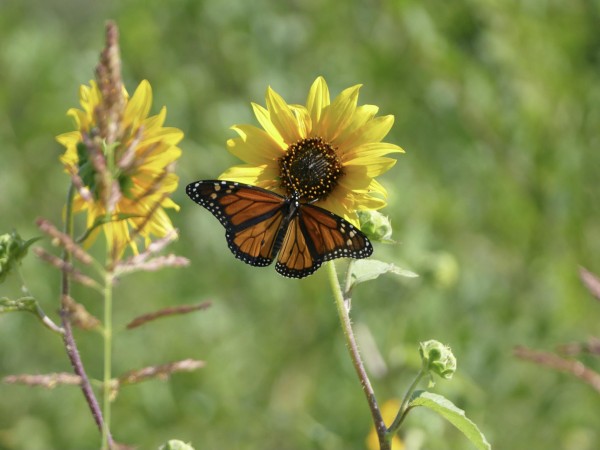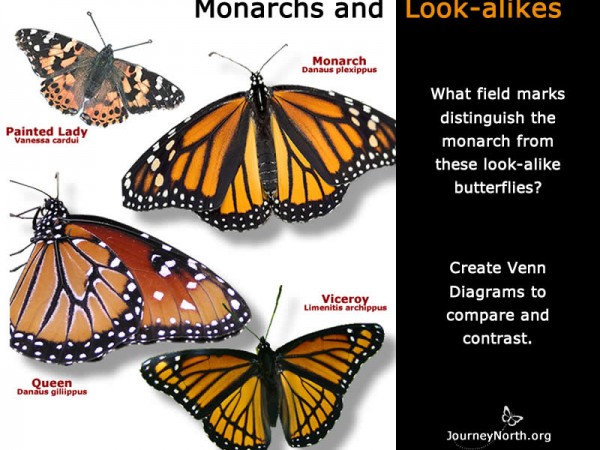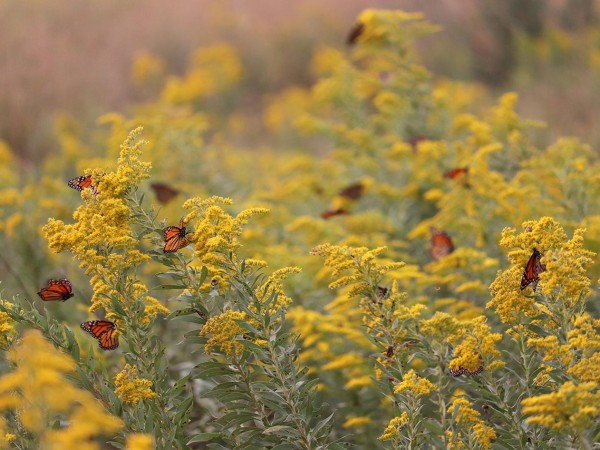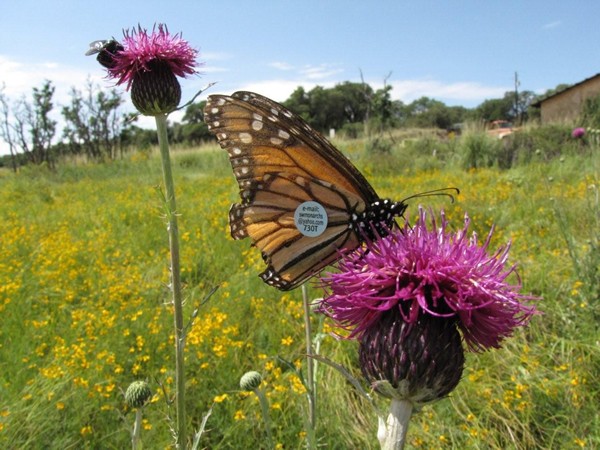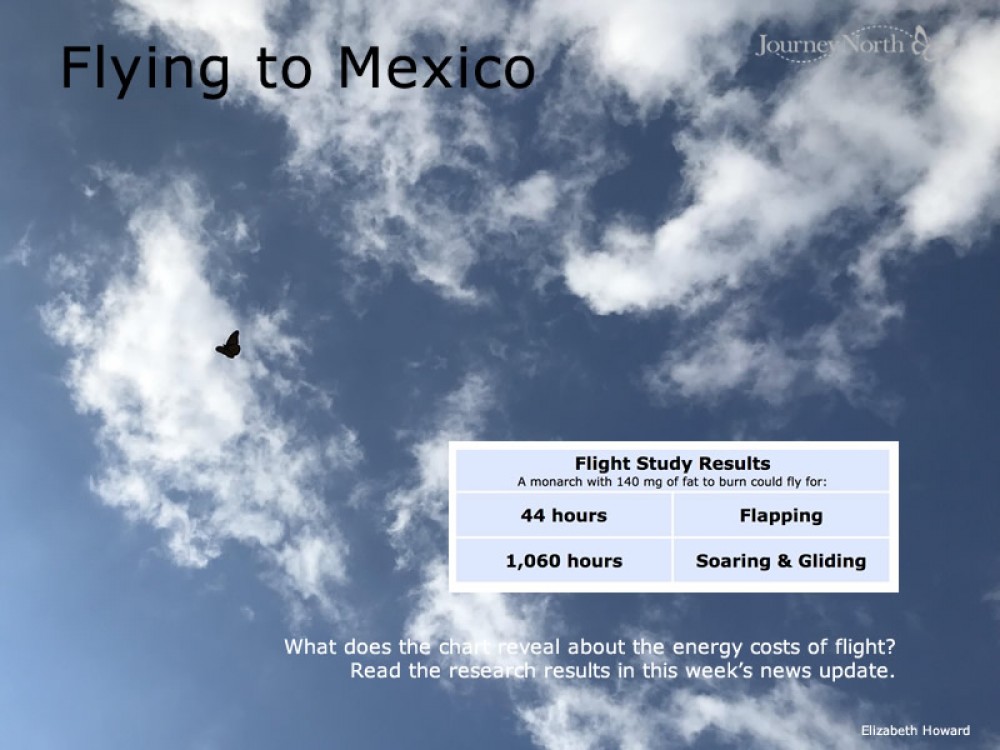On the Nectar Trail
The Leading Edge of Migration
For the eastern population of monarchs, fall roosts are being reported around 40-41°N in the Midwest and Northeastern U.S. Peak migration events are occurring in similar locations, although there are still reports farther north.
Donald A. in Port Hope, ON: "Clearly this is the peak of the migration along the north shore of Lake Ontario west of the Municipality of Port Hope. In this cover field, just north of the shore of Lake Ontario, I captured 282 monarchs on Saturday to tag and another 240 monarchs on Sunday, September 12th. In town, monarchs were soaring high and flying west over the town, dropping down to nectar on the buddleia in the garden. Obvious migratory flight. Hundreds and hundreds of monarchs were stopping to feed in this huge clover field." (09/12/2021)
Jan in Cedar Bluffs, NE: "Counted 52 around dusk. it is after noon here and there are still a few in a small group still hanging out, they usually fly off as the sun warms them up." (09/13/2021)
Rick in Mystic, CT: "[68 monarchs] flying east to west coming in from water and nectaring on Ender's Island gardens. Count was an hour long." (09/13/2021)
For the western population of monarchs, an uptick in nectaring activity is being noted by Journey North citizen scientists in the Southwest and up through the Bay Area in California.
Jim in Mesa, AZ: "7:30 am, feeding on Mexican Bird Of Paradise. Several Milkweeds below." (09/12/2021)
Joyce in Mountain View, CA: "Seeing more monarchs in our garden now, all males. In this picture I was taking a picture of a bee when a Monarch flew into the shot to steal the show." (09/12/2021)
Eastern Monarch Population
Eastern Monarch Fall 2021 Report #2
High numbers of eggs and larvae were observed in the southern U.S. Farther north, Journey North citizen scientists noted late season larvae and deteriorating milkweed. Reports of fall roosts and peak migration were largely concentrated in southern Ontario and the Upper Midwest and Great Lakes. But activity also increased along the Eastern Flyway in the Northeastern U.S. And intense nectaring was widely reported as monarchs are getting ready for a long journey and building the lipid reserves they’ll need for overwintering.
Read more of the Eastern Monarch Fall 2021 Report #2»
Western Monarch Population
Letter from Gail Morris: Western Monarch Fall 2021 Report #2
Monarchs that are freshly eclosing now will become part of the migrating generation, especially in the Northwest. Flowers are now the main passion of these monarchs as they nectar to gain lipids to sustain their long and arduous flight. Milkweed in bloom will still be a favorite nectar source but the new fall blooming nectar resources will soon grab their attention. Migrating monarchs are not breeding so they live through the winter months. Some breeders will still be embedded in their numbers but they will live out their shorter 3 to 6 week lifespan giving rise to the migration generation. Reports arriving from throughout the West are of more monarchs than last year at this time but we won’t know the full numbers until the counts are conducted in November.
Read more of Gail Morris' Letter: Western Monarch Fall 2021 Report #2»
Back to School: GIS and Monarch Migration Data
This past spring, Sarah Downing, a recent graduate of Marian University in Indianapolis, utilized Journey North datasets for a Geographic Information Systems (GIS) research project. Dr. Zach Sylvain, an assistant professor of Biology, taught the GIS course and encouraged students to answer a research question based on publicly available data. Sarah's project examined Journey North first sighted adult monarchs, monarch eggs, and milkweed data from 2004–2019 to see if there were any noticeable changes in the timing, and compared those datasets with predicted climate change patterns. This collaboration is a great example of how Journey North can boost data literacy and inspire the next generation of scientists.
Read the full article: GIS and Monarch Migration Data»
Watch for Monarch “Look–alikes” and Keep Reporting
Other butterfly species such as American snout, viceroy, queen and painted lady can resemble monarchs from a distance. Identification isn’t always easy – especially when butterflies are flying – so be sure to review what distinguishes monarchs from look–alikes.
When you observe monarchs, we want to know. Keep reporting until you see your last monarchs of the fall migration season.


